
02 Mar A Painterly Oasis: As Concrete as the Clouds
CAPISTRANO BEACH IS A QUIET RESIDENTIAL ENCLAVE a short drive south of Orange County, California’s historic Mission San Juan Capistrano, celebrated for the ritual return of migrating swallows. It is also home to the painterly oasis created by Spanish-born painter Maria del Carmen Calvo and her husband, retired cardiologist Dr. Walter L. Henry.
Past the bend in the road, two knee-high rows of camellias form a Lilliputian honor guard. Custom iron gates, hand – forged with twists and loops as intricately patterned as fine European lace, hold open the passageway through a well-established ficus hedge. Step through onto the brick courtyard, where the couple’s automobile tires polish the centered bronze medallion. From this vantage point, you face a sensation akin to choosing which romantic painting to be cast in first. Will birdsong entice you past potted citrus trees to gardens fragrant with blossoms of roses, lavender and wisteria? Or will music emanating from the home persuade you to cross its threshold? To do so, you will pass a door with the heritage of magic: In another life it is reported to have been a gate at the home of Harry Houdini.
Such enchantment wasn’t part of the home’s purchase price. In 1985, when the artist spotted the 1969-built home on a busy residential corner, what greeted her was a Tudoresque façade fronting a faux Hawaiian interior, complete with plastic ferns and a black resin kitchen countertop.
The artist’s observant eye swooped straight past the French doors opening onto the patio and the Pacific Ocean beyond. This view guaranteed that other suitors would be bidding. Calvo smiles, recalling the edge the Impressionist painter gained when the owner recognized her name from the Festival of Arts of Laguna Beach.
So began the ongoing journey where art, garden and home merge into the whole of a trinity, where each aspect of one informs the others. Here is where Calvo’s training as a painter was expanded to the three-dimensional execution of the concepts she had mastered on two-dimensional canvases. Following the precepts used in oil painting, Calvo focused her energy on creating spaces of inspiration. She advises: “Don’t lose energy in planning. You can always begin again. But only if you start.”
Convent educated, the painter once considered becoming a nun. She heeded the advice of a wise uncle who recommended she “see the world first.” Before study in France and the United States, Calvo trained in Madrid at the Academy of Bellas Artes. From this Spanish upbringing, her artistic expression is redolent with reverence for spirituality and tradition. Now a longtime resident of Southern California, life in America taught Calvo to embrace experimentation.
“There is purity in modern structures, which have always fascinated me,” Calvo explains. “In the 1970s, I painted the observatory in New Delhi because of the purity of the forms. In the 1980s, I painted freeways and bridges and buildings of Santorini, because they reminded me of cubistic structures, before returning to traditional work. I found that the more modern paintings pull and excite me while the traditional paintings fulfill my need for romance and passion. This is a dilemma that I constantly face.”
This dichotomy of personal narrative infuses thought-provoking tension points within the rhythmic transitions of classic design elements juxtaposed within modern execution. It is found in her art and in the remodeling of her home into a masterpiece of artistic expression.
Calvo’s dressing room is resplendent in rounded-off shapes. On the exterior wall, a leaded ribbon is tied above the arched alcove where a fountain is repurposed into a sink. Not satisfied with a simple faucet, the sink is plumbed for water to fall like rain in front of where sunlight dramatically backlights a René Lalique vase embedded in the wall. The Old Master classicism of the scene is all the more dramatic for the steep angular slash of concrete wall between where ablutions may be discretely performed and her private garden.
Throughout her home, Calvo approached her residence’s transformation with romantic lyricism, imbuing dark spaces with light and life. One room at a time, the artist peeled away flimsy wallcoverings, including large swaths of inexpensive plywood paneling. She formulated a technique where tempera mixed in plaster at just the right moment produced a medium to spread depth of color on a single plane of wall. By rounding the sharp angles where walls meet, Calvo created visual softness. Waxing and polishing enhanced the color gradations and protected surfaces.
In homage to the carved woods of her homeland, Calvo found satisfaction in revealing the wood’s natural textures by stripping away gloomy tones. Carved doors, cabinets and even the ceiling trusses were lightened. The artist experimented with finishes until the mood she desired for the space was made real.
With windows and doors thrown open, sights, sounds and scents of home and garden mingle freely. Each space overflows with vignettes. Some are in the context of the larger scheme, such as the kitchen, where shades of blue and turquoise complement her beloved collection of copper pots. Some scenes are intimate, such as the daily refreshing of bouquets plucked from the garden.
The artist is humble in her creation of her home as romantic masterpiece. “Sometimes my ideas are as concrete as the clouds.” In visualizing her studio, she knew “I wanted tall, metal windows.” While contributions by different people made the entire project possible, the artist considers a former city planner, Raymundo Becerra, and her husband as her most important collaborators. “They expanded my vision,” she says.
Becerra drafted architectural drawings defined by courageously soaring bold grids of glass, whereby Calvo now paints surrounded by natural light, even in rare inclement weather. To execute the actual construction under the artist’s supervision, her husband consulted local subcontractors for recommendations.
In the mild Mediterranean climate, outdoor spaces are of equal importance to the interior. In designing the patio flooring, Calvo knew she wanted a diamond pattern, “but none of the walls are on square.” Her husband solved the dilemma with his computer skills, drawing options to scale, making the best grid size and alignment obvious. “He never tells me no,” she says. “He just asks, ‘How will you do that?’”
In her painting, the notion of how to translate landscape onto canvas dissolves in unconscious sweeps of pigment. Paintings are relatively short endeavors. In her career, Calvo has sold more than 3,000 original pieces. In contrast, her home is an ongoing creation she has no intent of parting from. In moments when the process of how to bring a scene to life feels stale, the artist’s equivalent to writer’s block, she steps away from the canvas. Changing her focus to a project in home or garden provides a vacation for her soul. She returns to her studio refreshed and renewed.
“Artists do not live in beautiful spaces because they are artists,” Calvo explains. “We live in beautiful spaces so we can be an artist. Beauty is stimulating, like music. It is food for the soul. I have gone to extremes to create and surround myself with beauty. It is necessary for my survival as an artist.”
- Pots collected from Spain and France are kept within reach of the cooking area for everyday use. The copper patina is especially attractive against the custom blended peacock blue – green plaster wall. Three sketches of a fry pan with eggs imbue the space with personal charm.
- Everywhere in the garden, as in the home and studio, there is vibrant color.
- Throughout the home, the artist’s belongings are arranged like still life.
- Stripping the living room beams to their natural wood color brought brightness in a formerly dark space. Infusing plaster with ochre and yellow in the walls provides the perfect backdrop for art.
- Old Spanish carved doors, lined with metal inserts on the inside, lead to the main entry of the artist’s studio. Kachina dolls from New Mexico arranged on an antique console draw attention to Calvo’s painting of the Pigeon Tower, a subject also painted by Cezanne, in Provence, France.
- A triangular skylight at the interior passage joining home to studio enhances the space with all day streaming of natural light. On the wall is a painting of the family dalmatian, Goya, contemplating the goldfish in the lily pond.
- From the main entrance courtyard, a cherub fountain peeks through an opening in the side of a Ficus hedge. The artist’s studio is through the olive tree and lavender garden.
- In the main studio, paintings are hung from steel strips using a custom – designed metal wire system over concrete walls. The floor is construction – grade Douglas fir with cement caulking.
- Guests are welcomed by antiques, including a Flemish polychrome 17th – century angel in a custom designed alcove.
- Calvo’s palette awaits in front of a work in progress.






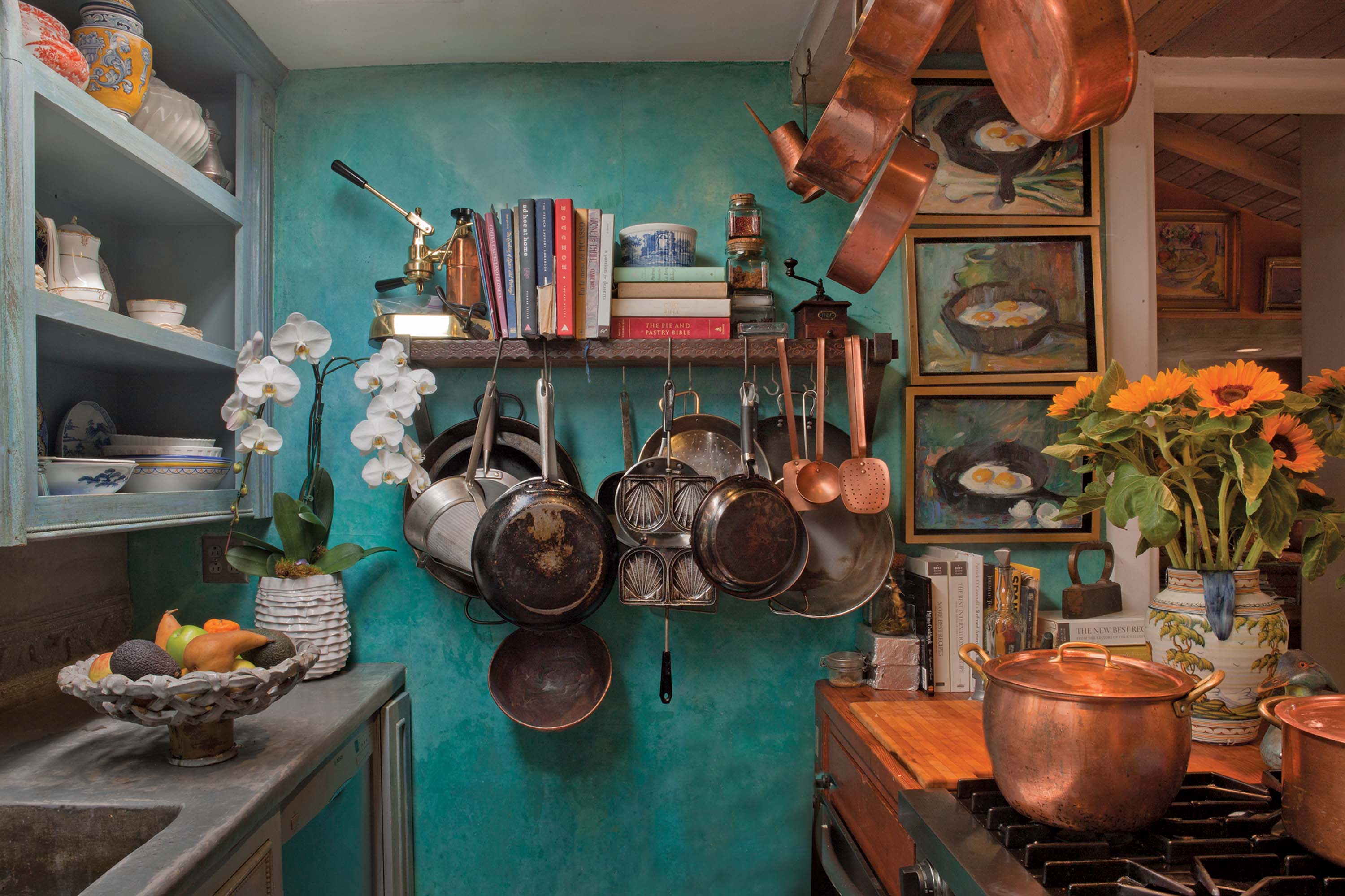
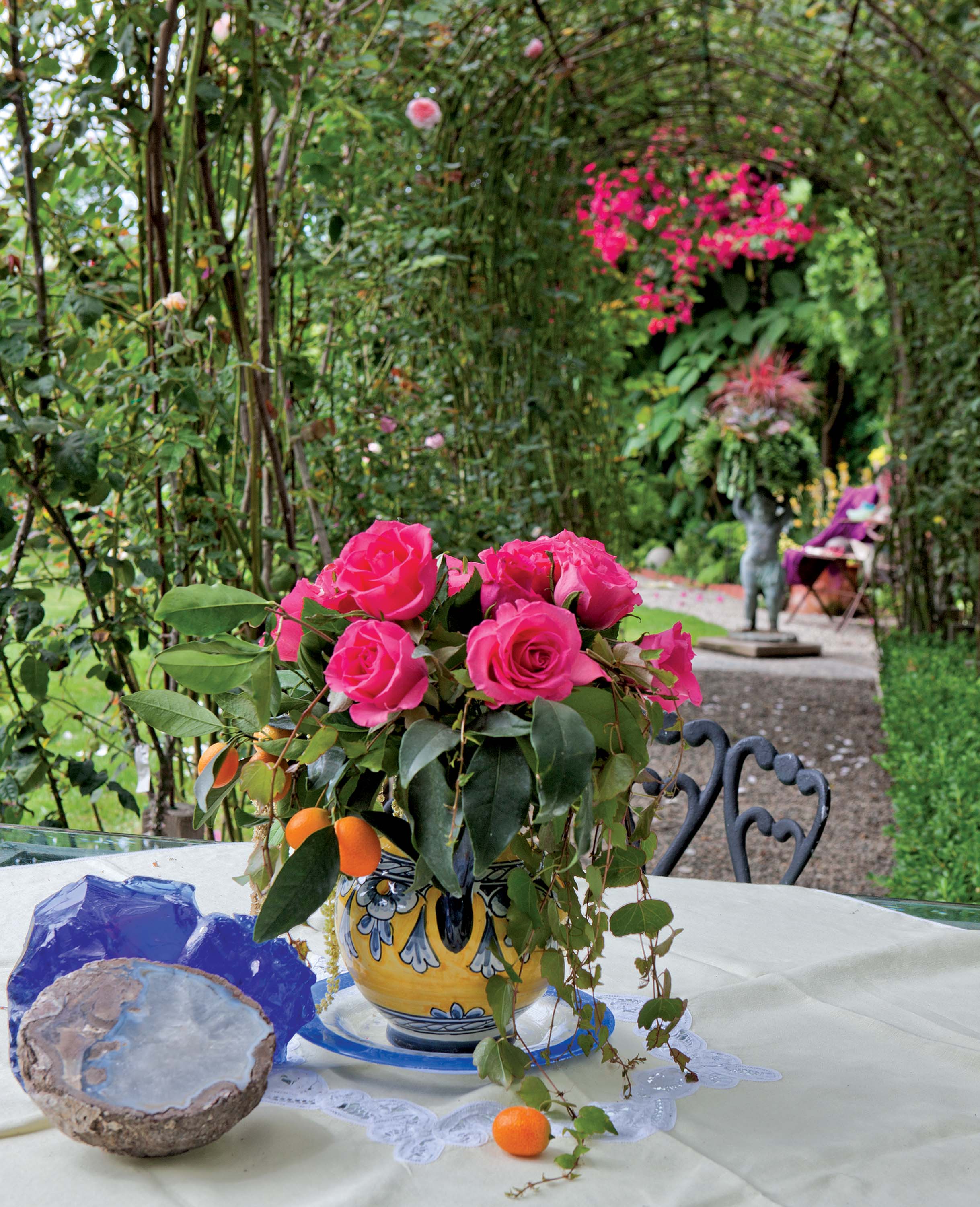
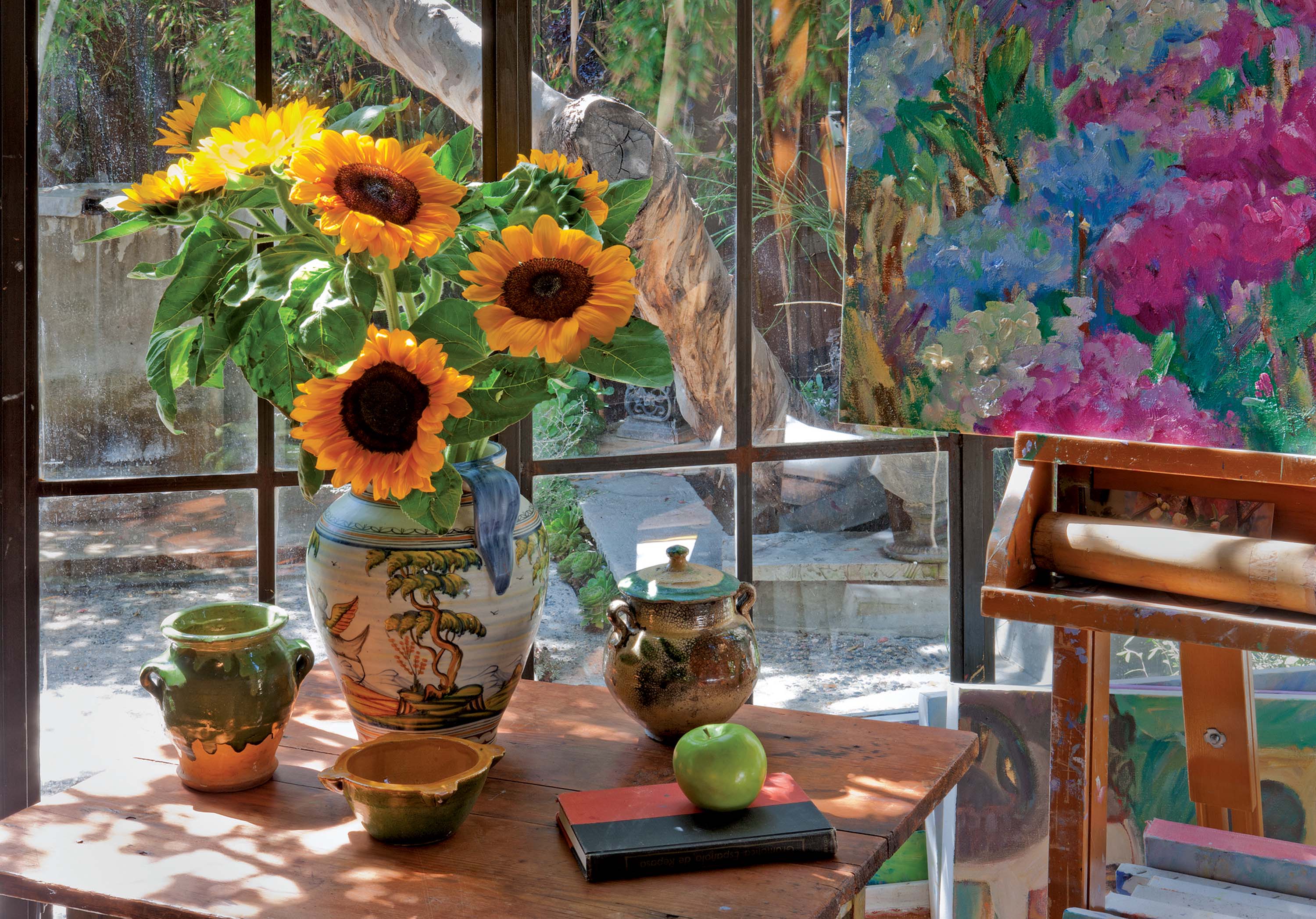
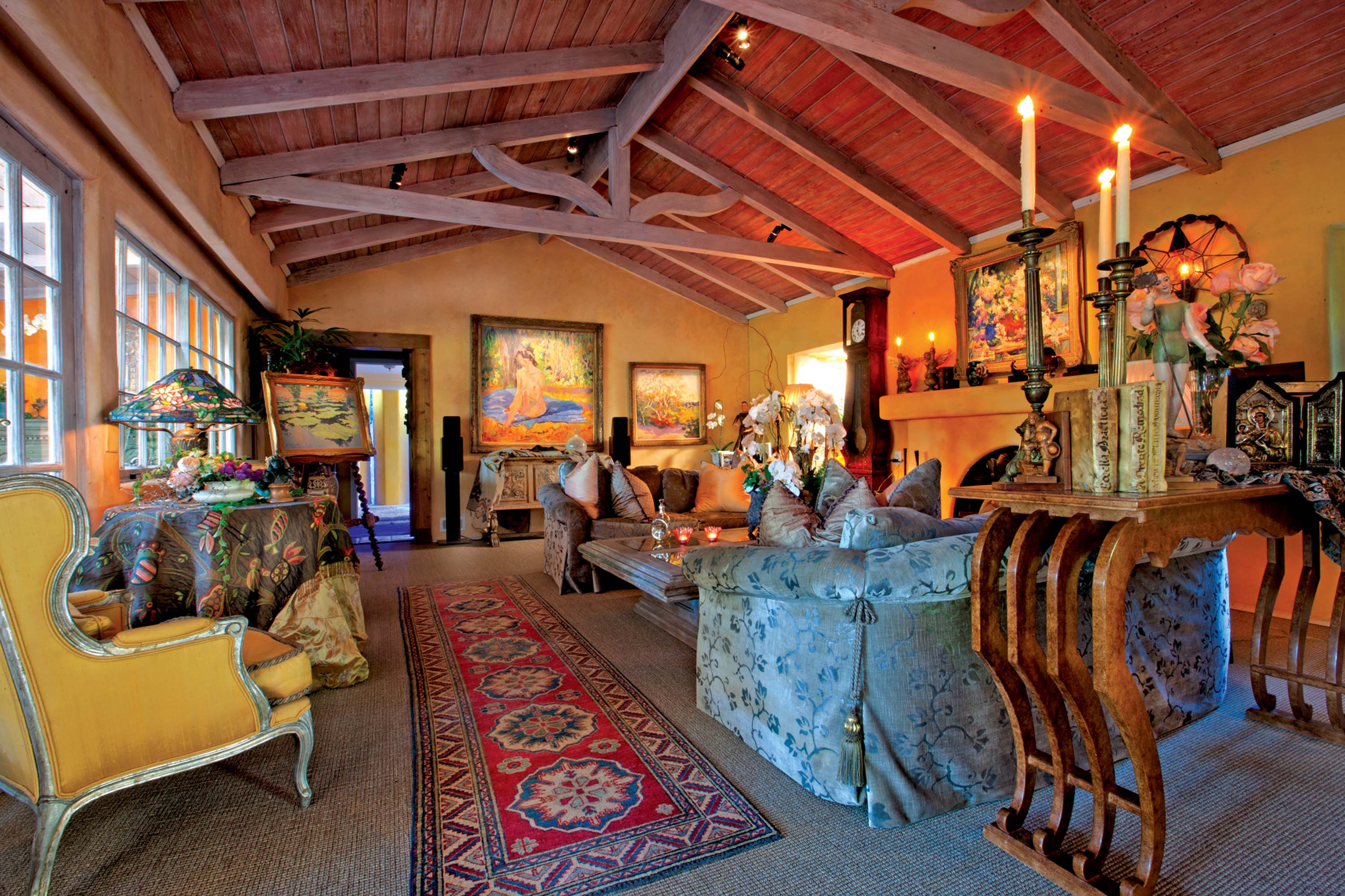
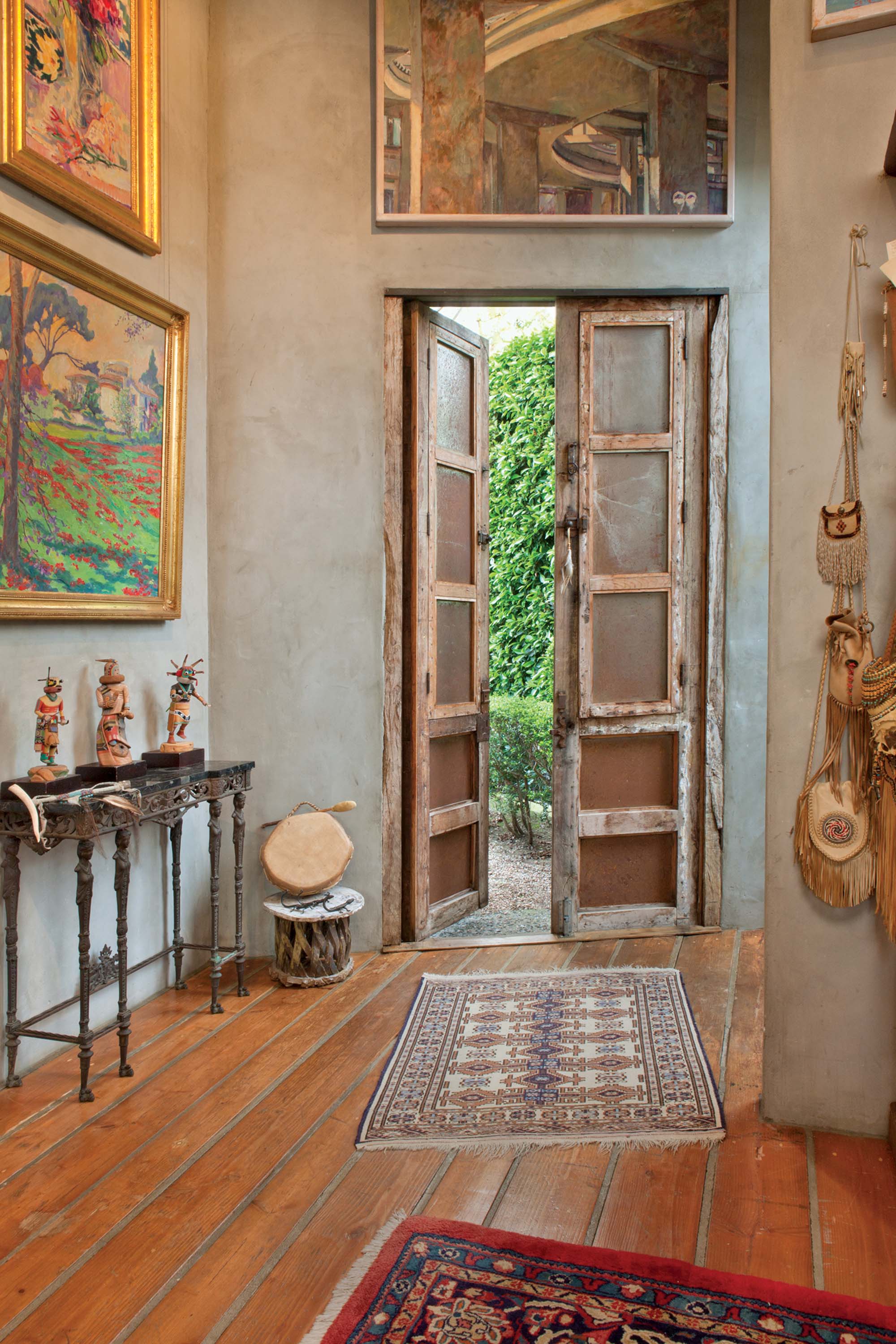

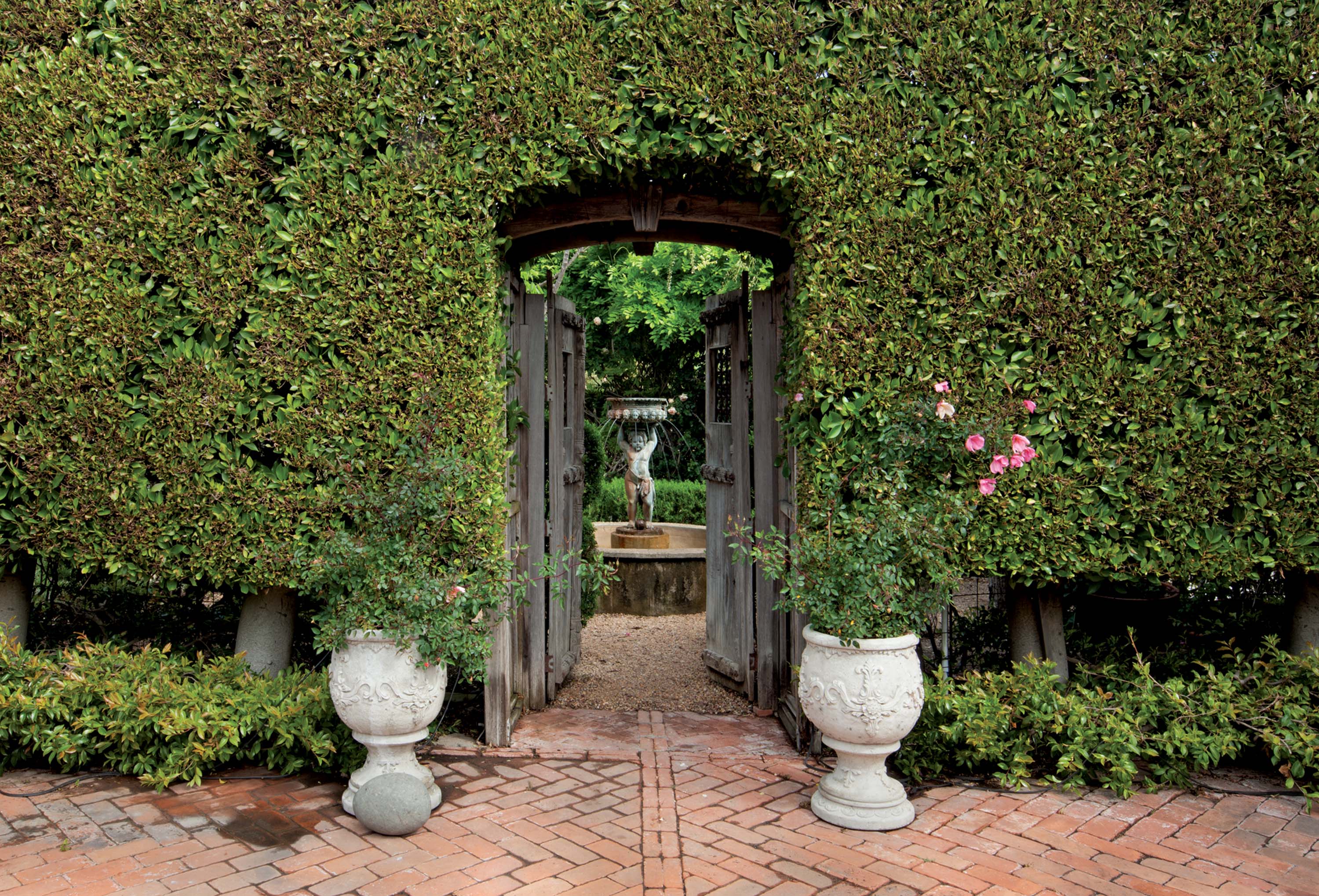
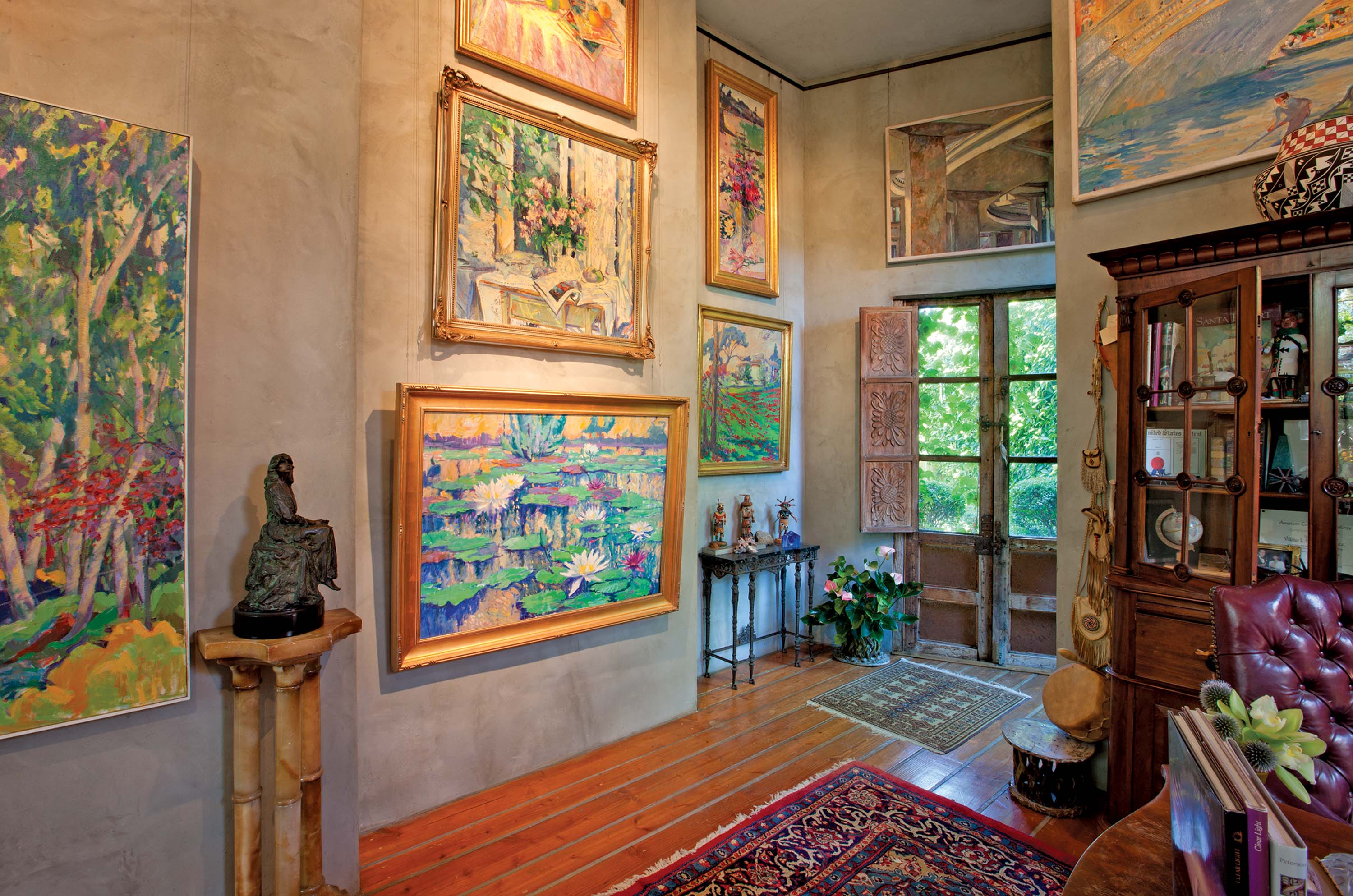

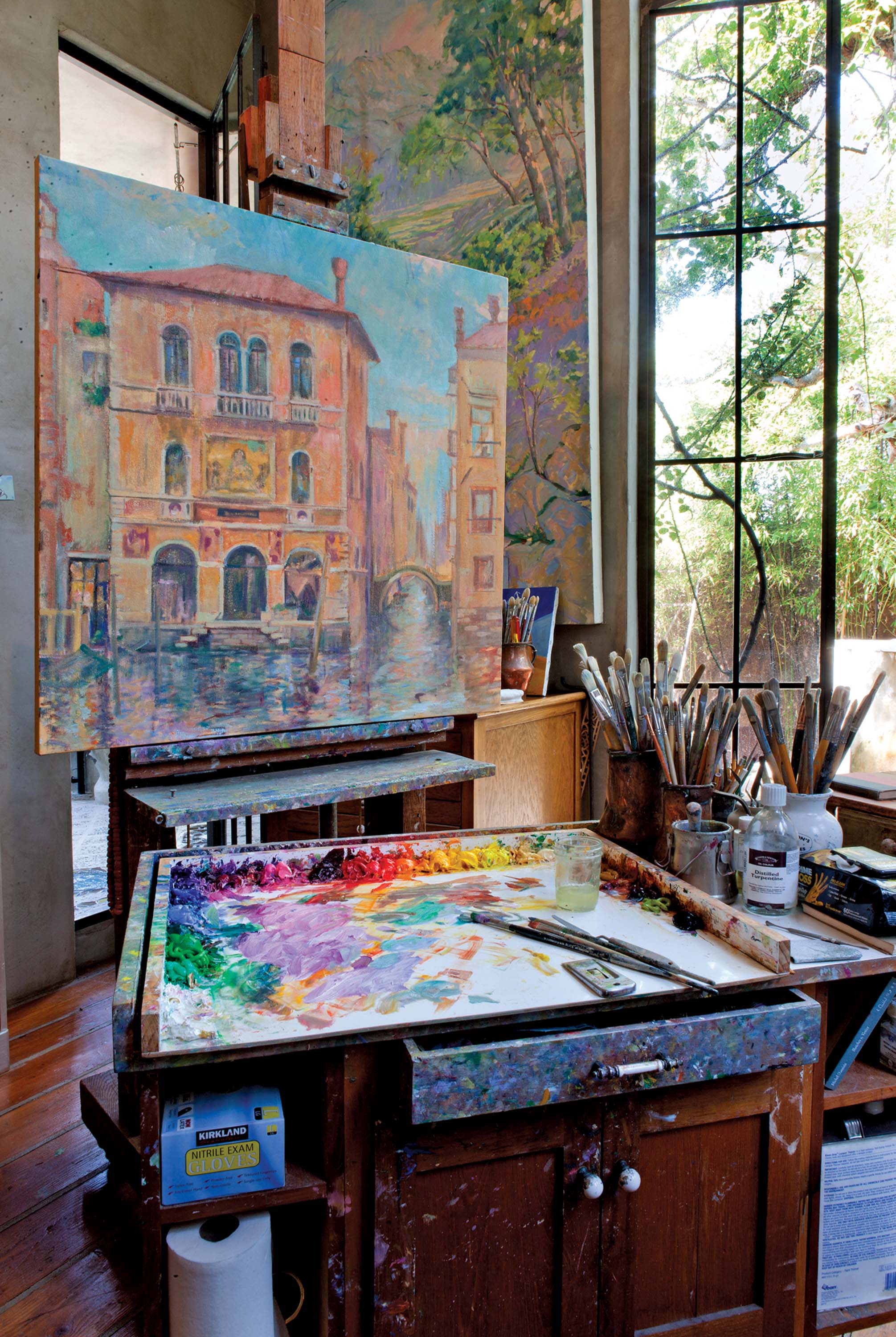
No Comments